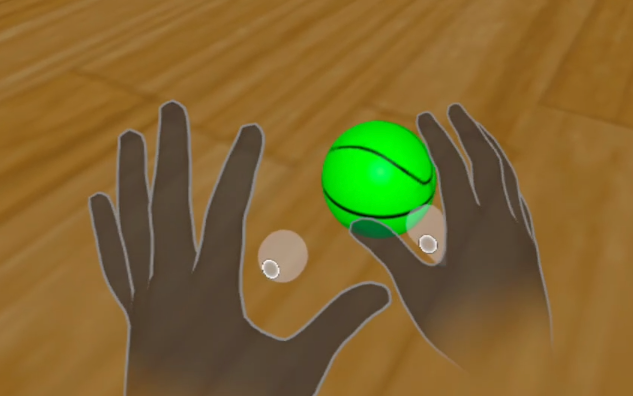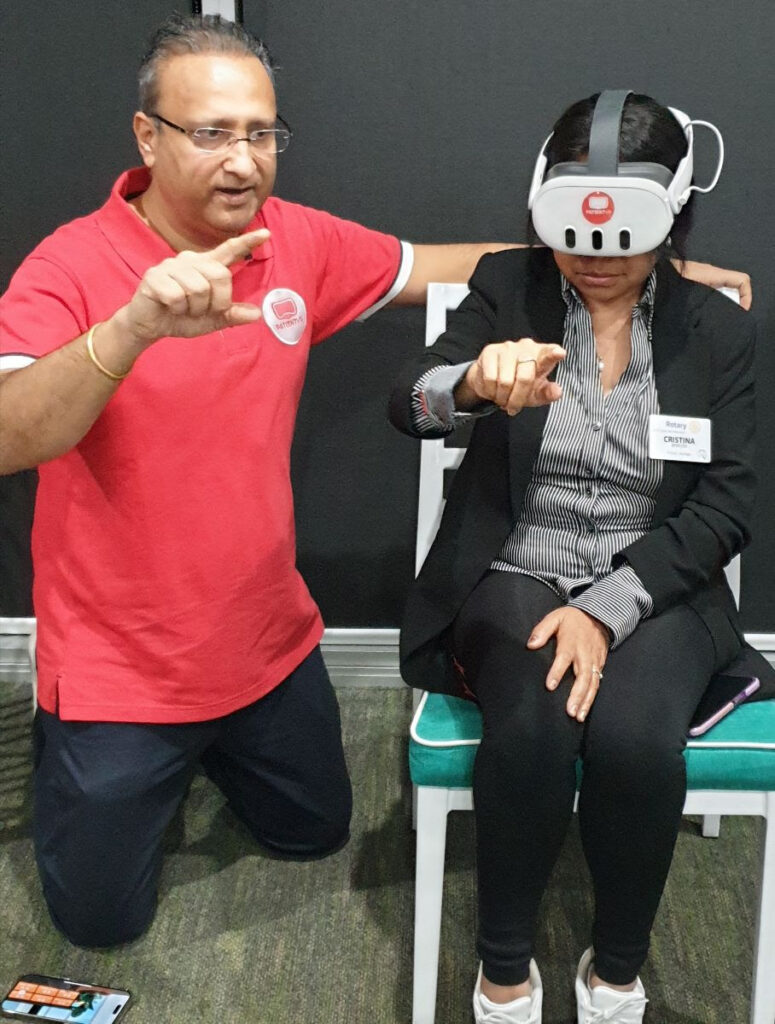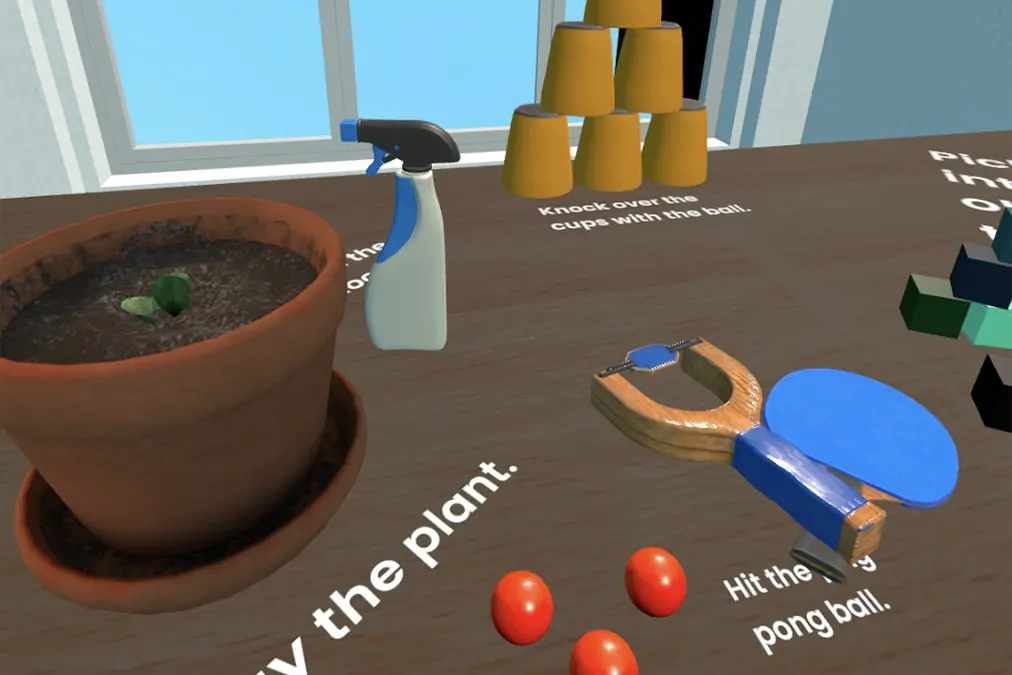The PatientVR “Interact” library features offers numerous benefits for patients, providing a fun and therapeutic virtual reality (VR) experience. These gamified features are designed to enhance controlled physical movement, cognitive function, and overall well-being through immersive gameplay.
Controlled Physical Exercise
Patients engage in virtual movements that mimic real-life actions such as picking up and throwing balls using hand gestures. This activity promotes physical exercise, enhancing mobility, hand-eye coordination, and fine motor skills. The repetitive nature of the game can help improve muscle strength and endurance.

Cognitive Stimulation
Playing Interact – Hoops requires strategic thinking, spatial awareness, and precise hand-eye coordination. The game stimulates cognitive functions such as problem-solving, decision-making, and memory recall. Patients must judge distances, aim accurately, and decide the best trajectory to score points, which engages and sharpens their mental faculties.
Emotional Well-being
The engaging and enjoyable nature of Interact – Hoops contributes to a sense of accomplishment and joy. The game is designed not to be competitive but to provide a fun and rewarding experience. Successfully completing tasks within the game can boost patients’ mood and emotional well-being, offering a positive distraction from stress or discomfort.

Therapeutic Recreation
Integrating recreational activities into daily routines can have significant therapeutic benefits. The gamification experiences offer a pleasant break from traditional therapy, promoting relaxation and enjoyment. Even a few minutes of gameplay can provide a welcome distraction, helping to reduce anxiety and improve overall mental health.
Adaptability and Accessibility
Interact features are designed with accessibility in mind, ensuring it is easy to use for patients with varying cognitive and physical abilities. The design thinking of these features include simplified controls, minimal animations, and some customisable settings to cater to different needs and promoting positive engagement.
Reminiscence Therapy
For some patients, Interact can also evoke positive memories of past experiences involving similar activities. This can serve as a form of reminiscence therapy, encouraging patients to recall and share memories associated with games and sports they enjoyed in the past, thus fostering a sense of nostalgia and connection.
Sensory Processing
In the virtual environment of Interact features, the brain processes sensory feedback such as visual cues from the immersive surroundings, auditory feedback including music and sound effects, and tactile sensations from interacting with the virtual environment through hand gestures. This sensory processing enhances the realism of the experience and helps patients fully engage in the activity.
Cognitive Engagement
Beyond physical actions, Interact involves cognitive processes like decision-making and strategy formulation. Patients must anticipate the trajectory of the balls, adjust their aim, and apply the appropriate force to score points, all of which engage the brain in complex sensory-motor interactions.
PatientVR – Interact features are designed to be beneficial by promoting physical, cognitive, and general health. By providing a virtually immersive environment with engaging gameplay mechanics, the Interact features helps patients improve their hand-eye coordination, decision-making skills, and overall well-being. This innovative approach through gamified experiences offers a holistic way to enhance patient care and enjoyment.



